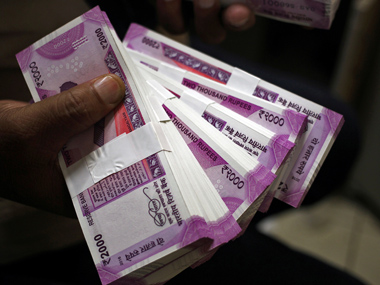The fiscal deficit is the difference between the government’s total revenue and total expenditure. It is an indication of the total borrowings required by the government. This is an important parameter to gauge the government’s overall performance and the sustainability of growth in the future. Deficit differs from debt, which is an accumulation of yearly deficits. A fiscal deficit is regarded by some as a positive economic event. A government cannot ignore the rise in fiscal deficit beyond a level as it will create a serious impact on the economy. There are several risks with high fiscal deficits. First, fiscal deficits spilled over could lead to macro-economic instability particularly if the government resorts to deficit financing (i.e. borrowing beyond a limit and the printing of new currency). Second, high fiscal deficits put in trouble the national saving rates, thereby reducing overall aggregate investment. This further jeopardises the sustainability of growth. Low levels of public-investment render poor physical infrastructure incompatible with a large increase in the national domestic product. [caption id=“attachment_6013191” align=“alignleft” width=“380”] Representational image. Reuters.[/caption] Third, persistent high fiscal deficits, even if they do not spill over, lead to macro-economic instability in the short-run, requiring higher taxes to cover the burden of internal debt. High tax rates will place the country at a significant disadvantage relative to other fast-growing countries by reducing the competitive strength of the domestic producers; Fourth, bigger fiscal deficits have adverse impacts on the balance of payment (BoP) too. Aggregate excess demand representing a shortage of domestic supplies spills over as current account deficit (CAD). External loans raised to finance the current account deficit (CAD), ultimately leads to a BoP crisis. Finally, in the event of large fiscal deficits, even independent monetary management cannot sustain a low-interest rate regime. This, therefore, impinges on a necessary condition for macro-economic stability that ‘real interest rate must be lower than the GDP growth rate’. Modi govt and fiscal deficit The average fiscal deficit growth rate under the Narendra Modi government has been 1.7 percent lower than what was reported during his predecessor, Manmohan Singh’s tenure. This can be attributed to the spike in fiscal deficit during the third year of the United Progressive Alliance-II (UPA) government. The government had set the fiscal deficit target at 3.3 percent initially for FY19. Later, it was revised upwards to 3.4 percent of the GDP in the interim Budget for FY20 presented on 1 February. It is expected that the fiscal deficit may be revised upwards from 3.4 percent in the upcoming Budget in July too to fight the economic slowdown in the country. The move is aimed at stepping up public expenditure while keeping in mind that the tax revenue is not going to pace up in order to match the increase in expenditure. In February this year, the International Monetary Fund (IMF) had said that greater efforts would be needed to reduce the fiscal deficit as the interim Budget envisages a slower pace of fiscal consolidation than previously planned. “The interim Budget envisages a slower pace of fiscal consolidation than previously planned, delaying the time to reach the medium-term central-government debt target of 40 percent of GDP,” Ranil Salgado, IMF mission chief for India said.
Follow full coverage of Union Budget 2019-20 here
Deficit differs from debt, which is an accumulation of yearly deficits. A fiscal deficit is regarded by some as a positive economic event.
Advertisement
End of Article


)

)
)
)
)
)
)
)
)



